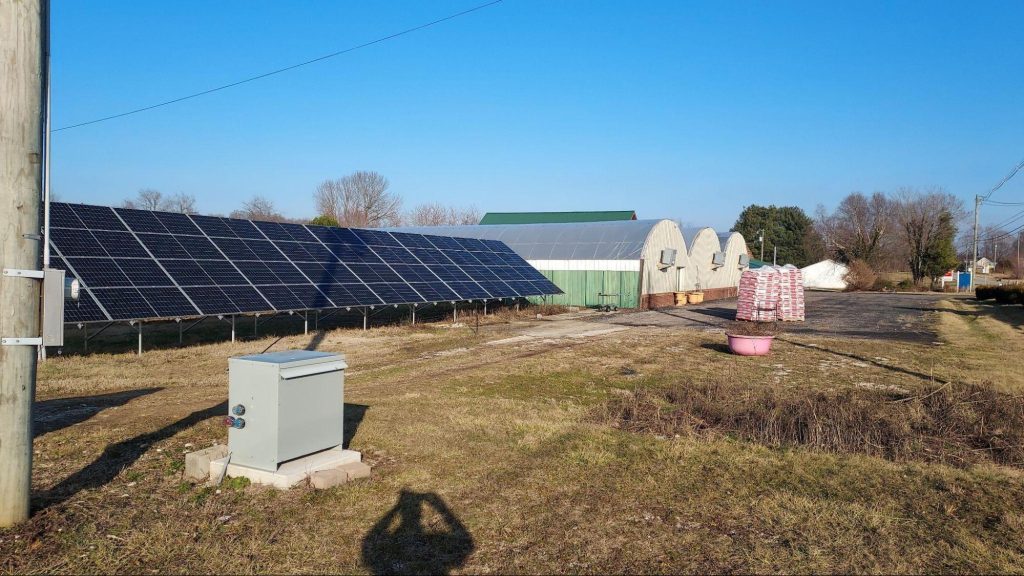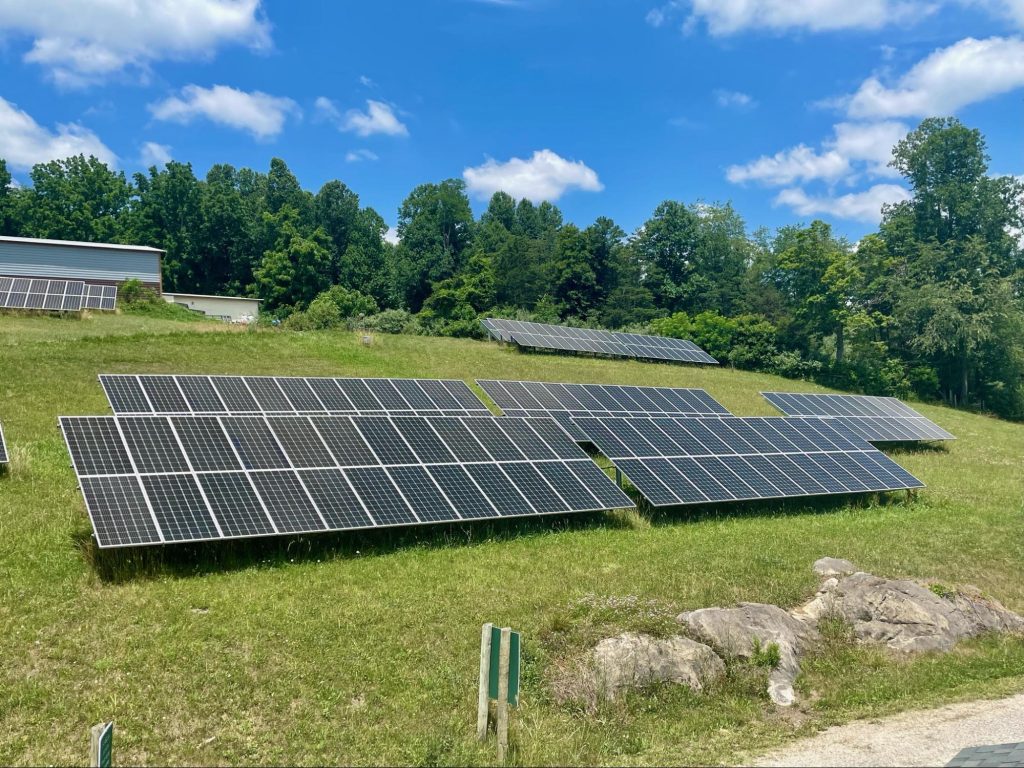Front Porch Blog

Editor’s note, Aug. 21, 2024: This blog has been updated to reflect the release of our recent report, Rural Energy for America Program: Working for Appalachia.
During the transition to a new energy economy, it’s crucial that all people have an opportunity to benefit from affordable, reliable clean energy, including disadvantaged communities. Unfortunately, rural Americans often see the physical impacts of new clean energy development in their communities without receiving the benefits of lower energy bills or new jobs.
The U.S. Department of Agriculture’s Rural Energy for America Program seeks to change that dynamic — giving rural farms and small businesses direct access to on-site clean energy that will lower their energy costs and give their businesses a boost. For more than 15 years, thousands of rural small businesses and farmers have received financial support installing renewable energy and making energy efficiency improvements to their properties thanks to REAP.
The amount of grant and loan funding REAP makes available to help these small businesses and farms is determined by both the Farm Bill — a package of legislation passed roughly once every five years — and the annual federal spending bill. Recently, REAP came into a large infusion of funds through the Inflation Reduction Act of 2022, which allocated an additional $2 billion to REAP through 2031. That investment immediately paid off — with the USDA seeing record demand for the REAP program a year after these new funds were enacted. Congress is currently working on the farm and fiscal year 2025 spending bills, and REAP stands to benefit from improvements to the bills that have been making their way through committees.
What is REAP?
In order to be eligible for REAP, an applicant must be an agricultural producer or a small rural business. To qualify as a small rural business, the business must be located in an eligible rural area with less than 50,000 people. This map helps applicants determine if they are in an eligible area. REAP grants can be used for a variety of renewable energy systems such as solar, wind, hydrogen and biomass power. They can also be used for energy efficiency improvements like insulation, cooling systems, windows and lighting. Before the Inflation Reduction Act, REAP funded up to $250,000 for energy efficiency projects and up $500,000 for renewable energy projects. The increased funding from the IRA allowed the USDA to double the maximum funds for the last two years, but the initial boost ends on Sept. 30, 2024.
How has REAP benefited Central Appalachia?
REAP is just one of the programs that the USDA administers that bring investments to rural communities across the country. From 2014 to 2024, REAP supported over 1,700 small businesses and farmers in Kentucky, North Carolina, Tennessee, West Virginia and Virginia to the tune of more than $1.3 billion. The savings from energy efficiency improvements or renewable energy allowed business owners to reinvest in their companies, hire more employees or even pass those savings along to their customers. Recently, Appalachian Voices released a report highlighting how REAP has benefited farms and small businesses across Central Appalachia, which you can find here.
How is Congress working on REAP this summer?

Congress is currently working on two important legislative packages — the Farm Bill, which is supposed to be done every five years, and the annual spending bill. Typically, the Farm Bill determines the amount of funding USDA has to provide direct grants to business owners and farmers over the subsequent five years, and the agriculture appropriations bill determines how much the USDA is able to help applicants with loan guarantees. Both bills also are able to make improvements to the way REAP is designed, which is crucial for expanding access to disadvantaged small businesses and farmers and those with less capital or grant-writing expertise.
This year, the Senate and House agriculture spending bills would greatly increase the $50 million in funding that was available for loan guarantees last year. The House version would double it to $100 million, while the Senate’s version increases it to $250 million. Both of these are less than President Joe Biden’s requested $1 billion. Both the House and Senate agriculture appropriations committees passed their respective funding bills in July.

The Farm Bills are where structural improvements to REAP would be made. The House Farm Bill would expand access to a wider range of applicants by doubling the cost share to 50% for beginning farmers and applicants in disadvantaged areas. This means that REAP could cover half of what a project actually costs. It also instructs the USDA to consider how the REAP project could meaningfully improve the financial conditions of the applicant, which would ensure that projects would have the biggest bang for their buck and help small businesses lower their bills. The House agriculture appropriations committee passed the Farm Bill on a mostly partisan vote in May, and it has yet to make it to the House floor for a full vote.
The Senate Agriculture committee hasn’t released the full text of its version of the Farm Bill yet. But a summary put out in May details some changes to the program, including permanently increasing the cost share to 50% like the House Farm Bill. It also requires the USDA to consider greenhouse gas reductions as a criteria in applications. The Senate version would also simplify the application process, and make improvements to the technical assistance program for applicants who are applying for small dollar projects.
It’s great news that all four bills — the Senate and House appropriations bill and the House and Senate Farm Bills —include improvements to REAP, and no proposed cuts. This success is the result of years of advocacy from rural people and organizations like you!
What’s next?
With the election this November, Congress is out of session for much of the next few months, so there isn’t much time left to negotiate and pass the farm and spending bills. It’s likely that Congress will have to pass a resolution to extend funding at current levels. This means the improvements Congress is considering for REAP could be delayed, which is bad for rural businesses.
Further delay of the Farm Bill has broad negative impacts for rural America, beyond the impacts on the REAP program. Recognizing this, in July, more than 500 organizations, including Appalachian Voices, sent a letter to members of Congress telling them to come to a bipartisan agreement to pass the Farm Bill this year. For the rest of the year, Appalachian Voices will continue to urge Congress to prioritize REAP funding and improvements in their appropriations negotiations and any Farm Bill negotiations, and tell the stories of how REAP is benefitting Appalachia.
PREVIOUS
NEXT

Leave a comment
Your email address will not be published. Required fields are marked *

Leave a Comment